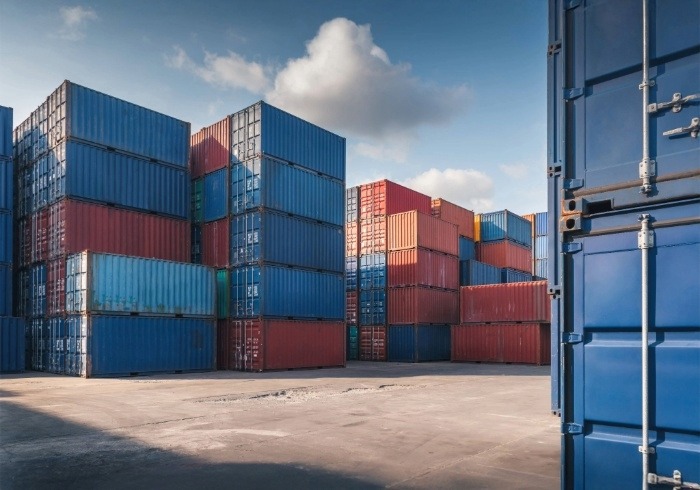With regulatory challenges to overcome and an evolving digital landscape to traverse, banks need to ensure they are positioned to support global trade opportunities and provide an optimised experience for clients. Dominic Broom, Global Head of Trade Business Development, Treasury Services, BNY Mellon, and member of the International Chamber of Commerce (ICC) Banking Commission’s Executive Committee, examines the global trade market, the growing influence of fintech on trade, and how it has the potential to reinvigorate and transform the industry.
This is a challenging time for global trade. Trade growth has slowed considerably in recent years, with annual growth in the volume of trade in goods and services averaging at approximately 3% since 2012 – less than half the rate during the preceding three decades.
This trend is being driven by a number of factors, including low commodity prices, economic rebalancing in China, and the fact that the world economy is still recovering somewhat from the global financial crisis. But another key point to remember is that trade in the 1990s and early part of this century was boosted significantly by globalisation and rapid emerging market growth. Double figure GDP growth in Latin American and Southeast Asian markets, as well as the reintegration of the Communist bloc into the world economy, gave a huge boost to global trade. And of course, this was occurring at the same time as the unprecedented growth in the Chinese economy. Inevitably, these “one off” factors could not be sustained and the level of growth was going to tail off.
Despite recent headlines heralding a more protectionist era, there is reason for optimism. With a recent rise in economic activity – particularly in Southeast Asia – and with the recovery of certain Latin American markets, it is hoped that 2017 will mark a positive year for global trade, with growth of 4% predicted by the World Bank Group (following a post-financial crisis low of 2.5% in 2016).
The trade finance gap: a yawning barrier to trade
Despite these positive signals, however, another worrying trend is having a particularly negative impact on trade: the trade finance gap. Currently standing at an estimated US$1.6tn, this figure represents a substantial volume of lost, unfulfilled trade opportunities. Certainly, if trade appetite is predicted to increase, the fact that demand may be unable to be met is of deep concern.
The trade finance gap is being exacerbated, albeit inadvertently, by heightened regulation introduced to help alleviate concerns raised in light of the financial crisis. As a result, facilitating trade has become much more expensive for banks, which must now navigate enhanced know your customer (KYC) and anti-money laundering (AML) requirements, as well as capital constraints brought in under Basel III. A recent Thomson Reuters survey found that financial institutions are now spending an average of US$60mn per annum on KYC procedures, with some spending up to US$500mn annually on compliance with KYC and Customer Due Diligence (CDD).
As a result of these spiralling costs, many banks have been forced to refocus their activities, leading to a withdrawal from certain markets. This “de-risking” is having an impact on small and medium sized enterprises (SMEs) in developing markets in particular, with many struggling to access finance. In fact, a 2016 survey by the Asian Development Bank (ADB) found that more than half – 56% – of all SME trade finance proposals are rejected.
So, although regulation and compliance is absolutely necessary to maintain the probity and sanctity of the global financial ecosystem, action needs to be taken to ensure this does not significantly impede companies’ access to vital trade finance.
For meaningful progress to be made, the whole industry – not just the financial services community, but regulators and industry government commercial bodies, such as Chambers of Commerce – must work cohesively; reducing the costs of compliance and enforcing document standardisation to improve efficiency of procedures.
Technology: plugging the gap
The role that technology, particularly in the form of distributed ledgers, could potentially play in reducing the trade finance gap is becoming increasingly apparent. The International Chamber of Commerce’s (ICC) Global Survey on Trade Finance 2017 revealed that 80% of banks believe fintech “will increase efficiency and reduce the cost of complying with regulatory requirements and due diligence”.
A number of initiatives are underway to improve and streamline existing KYC processes by removing the need for multiple banks to duplicate due diligence or compliance work on the same companies. SWIFT’s KYC Registry, for example, is a shared platform for managing and exchanging standardised KYC information across multiple jurisdictions. Users can upload documentation to the Registry and elect the institutions they share that information with. Another suggested improvement is a “KYC passporting” model, whereby approval in one jurisdiction can be used for approval in other economies, without further review.
The establishment of a centralised online database of registered companies in each economy – the Global Legal Entity Identifier (LEI) – which includes information and contact details needed for KYC purposes, is another important initiative. Established in 2014 by the Financial Stability Board, the Global Legal Entity Identifier Foundation (GLEIF) enables smarter, less costly decisions to be made, about who to do business with.
While solutions that immediately solve the issue of rigorous KYC requirements are not yet widely available, increased standardisation and collaboration is a key way of reducing current regulatory pressures. Of course, while technology can play a prominent part in this, it is here that global organisations such as the ICC and the Bankers Association for Finance and Trade (BAFT) can be invaluable in terms of advocacy, helping to promote the importance of harmonisation and procedural consistency across the industry.
Trade and technology – an ideal partnership
The potential for technology to bring enhancements to trade extend far beyond KYC solutions. Indeed, it is also creating opportunities to transform existing processes across the trade spectrum – including the interchange of data, exchange of documentation, digital approval of documentation, data analytics to unlock value throughout the supply chain, and the adoption of common standards relating to documentation to help ease the passage of goods, materials and services across the globe. It is therefore imperative that banks evolve and adapt – incorporating new digital capabilities into their services, in order to meet the needs of clients.
Technology can play a particularly important role in improving the ease of doing business. Developing technology platforms for use by trusted user groups, for example – where counterparties are known to each other, and where trade data and information can be shared and used by different participants across the trade finance arena to enhance existing processes – is an area where the industry could evolve and see real benefits.
This is what companies such as CCRManager are working towards. Singapore-based CCRManager recently announced the launch of an electronic platform for secondary market trading, which supports efficient, effective risk distribution, by enabling financial institutions to trade assets more actively and with a broader range of counterparties, in order to optimise their balance sheets. Elsewhere, TradeIX is the world’s first shared platform for trade finance, built using distributed ledger technology and driven using application programming interfaces (APIs).
The value of APIs is becoming ever-more evident and they are increasingly being used to enhance the client experience – in the trade arena and across the finance industry. Enabling interaction and information-sharing between online connected services, APIs act as interoperable interfaces that can aggregate processes and enrich data.
BNY Mellon is leveraging the capabilities of APIs through its pioneering digital ecosystem, NEXENSM. NEXEN is able to synthesise both internal solutions from BNY Mellon, as well as external capabilities from select third parties such as fintechs, to provide a one-stop-shop platform that clients can access via APIs and customise specifically according to their needs. Currently, BNY Mellon’s API store has over 100 APIs available, and this will continue to grow to incorporate new applications. APIs allow banks to be more forward looking, with the ability to adapt more easily to market changes and evolving client needs – which is vital in this fast-moving digital era. They can also fuel greater collaboration between banks and clients, helping to ensure banks’ innovation focus is on solutions specifically aimed at addressing client issues and providing an optimised trade experience.
Collaborating to reinvigorate trade
Certainly, collaboration is fundamental to delivering new value-added trade capabilities. Banks need to engage with digital and innovation specialists – and take an active role in driving forward digital change – to enhance processes and ultimately help to reinvigorate trade. By sharing and combining expertise and experience, banks and fintechs can better-leverage the opportunities being presented by technology, to help make new concepts and solutions a reality.
Digitalising and enhancing the passage of global trade is, however, an undertaking that extends beyond the realm of banks and fintechs. Indeed, the trade digitalisation journey has only just begun, and the industry as a whole must work together to accelerate change, advance current procedures, and narrow the trade finance gap.
It should also be remembered that, throughout the digital journey, correspondent banking – partnership networks that have long been a cornerstone of global trade – will continue to remain a crucial facilitator of trade. Such relationships are powerful means for banks to share expertise and technology capabilities, in order to provide the very best for clients and their trade experiences. BNY Mellon is a strong advocate of the correspondent banking model, and is investing heavily in its capabilities to help support its local and regional partners and the global trade landscape.
The trade finance gap is presenting significant challenges for the world of trade. Yet, concurrently, technology is providing the ability to not only potentially overcome the issue of de-risking, but to completely transform how we conduct trade. Trade is a hugely important driver of economic growth, but it is a labour and paper intensive business. By leveraging the power of technology through collaboration, and with the promotion and development of common standards and accessibility by the wider industry, together we can establish an efficient, secure, optimised trade environment – and ensure opportunities can be grasped to the full.








